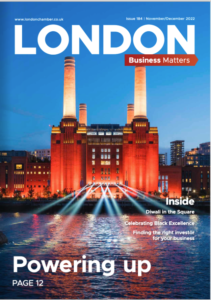

Decision-making drives purpose, leadership, and culture. Leaders make decisions. Engagement in decision-making aligns people to the purpose of strategy. Culture is about actions and behaviours, with the strength of organisational ethos resting on the decisions that sit behind the deeds of its employees.
In an era of perennial crisis, with the impacts of the Pandemic and the of war in the Ukraine, decision-making must be quicker, more resilient to change, and take greater consideration of options and alternatives. Businesses need to be able to pivot in rapidly changing circumstances. Simultaneously, decision-making has become more complex. Decision-makers are overloaded with competing data, coming at them from multiple sources. They must also involve an increasing number of stakeholders, which, in a hybrid working environment where uncertainty is the common constituent, is now more difficult than ever.
Despite this, commercial decision-making remains notoriously poor. A Microsoft survey indicates that 94% of employees are dissatisfied with decision-making in their organisations. Remarkably few companies use agile decision-making tools, which can be applied throughout the organisation to empower a decisive mindset. Instead, decisions are too often subject to random gut feel, internal politics and cognitive biases of anchoring, loss aversion or group think. Too frequently, impulse champions over objective reasoning. Furthermore, over-centralisation, poor delegation of decision rights, and siloed thinking are compounding decision-making mistakes.
Military mission decision-making methodology, used to determine difficult choices and reduce the complexity of decisions in the face of fluid battle situations, offers an antidote to this malaise. Based on an agile tool used at every decision-making level, from colonels to corporals, it objectively validates the optionality of different courses of action, reducing randomness and bias. Crucially, it includes all relevant stakeholders, generating psychological safety and decision engagement. This codifies permission to challenge, harnessing creativity and diversity of thought. Centred on a set of logically sequenced questions, the tool synchronises tasks and accountability in a system of seamless collaboration, aligning decisions to strategic purpose, empowering team leaders with autonomy, and structuring culture as a common habit of behaviours.
One can begin to imagine the outcomes of embedding such a tool in a business, whereteams are equipped and empowered to decide, then granted the freedom to act within the intent and purpose of the company objectives. Where mangers step up as leaders, are accountable and where there is no frozen middle. Where teams take appropriate bold action, no longer delegate everything upwards, and objectives are not subject to siloed foot-dragging. Organisations would make better decisions, be more productive, move at pace, be more resilient to change and move faster than the competition. In an era of profound uncertainty and crisis, it is a learning proposition that is worth exploring.
Article published in London Business MatterstheLondonChamberofCommerceMagazine – Novermber/December 2022 